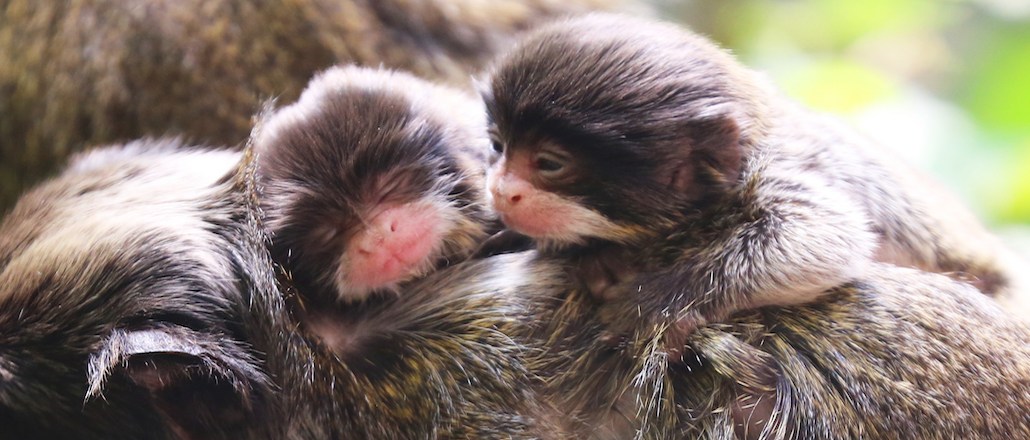Save 50% on a 3-month Digiday+ membership. Ends Dec 5.

It’s no secret that the internet loves cute. So when London Zoo released footage of its newborn Sumatran tigers last month, people went nuts.
The Facebook video, now at 521,000 views, is the best-performing in the zoo’s history. Friday’s follow-up, which showed the cubs on their first trip outside, racked up 12,000 views in its first hour on the platform.
London Zoo is getting serious about video — but it doesn’t want to over-index on cute. There’s plenty of serious work the zoo does, too. Following the hire of a new videographer in January, its six-person digital team is banking on the format to fuel its social growth.
“It’s at the forefront of everything we make,” explained Chloe Aust, who oversees digital communications at the Zoological Society London (ZSL), the non-profit that runs London Zoo.
While the zoo is pushing video content on YouTube, Vine and Twitter, its main focus is now Facebook, which Aust says is 10 times the size of its second-biggest platform, Twitter.
There, users can view footage filmed around the zoo or taken from its webcam feeds. Each short-form video contains factual information about the animals featured (London Zoo has 712 species in total).
Each video also features text to cater to the 85 percent of Facebook users who watch video without sound. London Zoo’s first video with text, about the Hanuman langur primate, saw double the views of its Komodo dragon video in the same series.
Video is a compelling format for Aust and her team. For starters, it fares better than other types of posts in Facebook’s updated algorithm. “Facebook is more brutal about what they show people now,” she said. “For the user, it’s great as the quality control is high. But it means our content doesn’t go as far.”
Facebook’s new baby, Facebook Live, is another way to cut through in the newsfeed, where the platform gives it pride of place.
Here, the zoo is broadcasting interviews of its zookeepers as they handle an animal. The format allows users to chime in with questions, too. So far its best-performing video was its Q&A about the Hercules beetle during Insect Week, which has amassed over 42,000 views and 220 comments. Weird creatures are another hit with users.
Previously, the zoo had attempted Q&A sessions on Twitter, but engagement was lackluster. It switched to Periscope but decided to make the jump to Facebook Live as the platform allows videos to have a longer lifespan after broadcast.
“Facebook is a monster of a platform, and it’s the biggest channel for us,” Aust said. “With Live, we couldn’t do two streams at the same time, so Facebook won.” The zoo is aiming to push out at least one video a week on the platform.
But the zoo isn’t just about fluff. It’s a part of the Zoological Society London (ZSL), which carries out hard-hitting conservation work in 50 countries worldwide.
While cute content has been a runaway success for the organization — it’s top YouTube hit is a video of a baby elephant that has over 3.6 million views — it’s also pushing for more educational fare.
On Snapchat, for example, members of the zoo team create ad hoc stories around animal facts. Meanwhile, its 360-degree videos on YouTube show viewers around its new exhibit, the Land of the Lions.
The challenge is marrying the cute with the serious stuff ZSL does. For example, its video on the rare smelt fish, which ZSL is looking to protect in the river Thames. The fish, which isn’t known for being squee-worthy, has had only 86 likes.
There are more documentary-style projects in the works which will deal with behind-the-scenes footage with scientists and aim to get users interested in its work.
“We could easily send out tiger cub videos every day,” Aust said. “But that’s not who we are.”
More in Marketing

In Graphic Detail: Here’s what the creator economy is expected to look like in 2026
Digiday has charted its expected revenue, key platforms for creator content as well as what types of creators brands want to work with.

Ulta, Best Buy and Adidas dominate AI holiday shopping mentions
The brands that are seeing the biggest boost from this shift in consumer behavior are some of the biggest retailers.

Future of Marketing Briefing: AI confuses marketers but their own uncertainty runs deeper
That was the undercurrent at this week’s Digiday Programmatic Marketing Summit in New Orleans.





